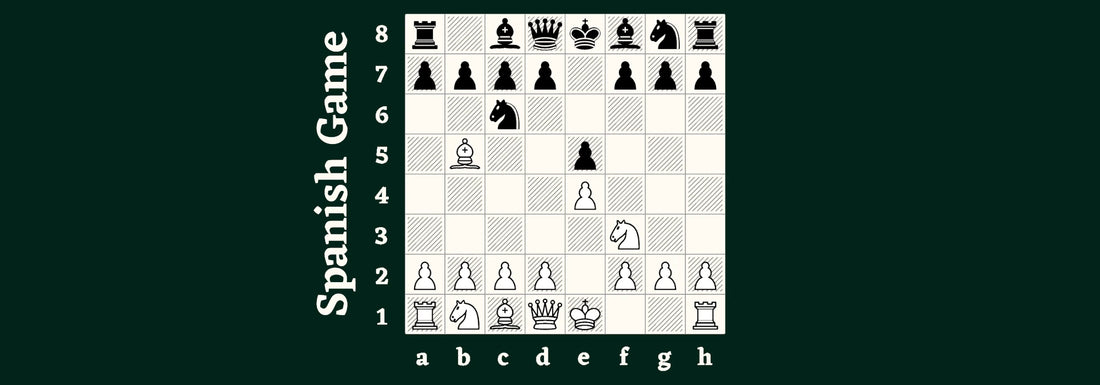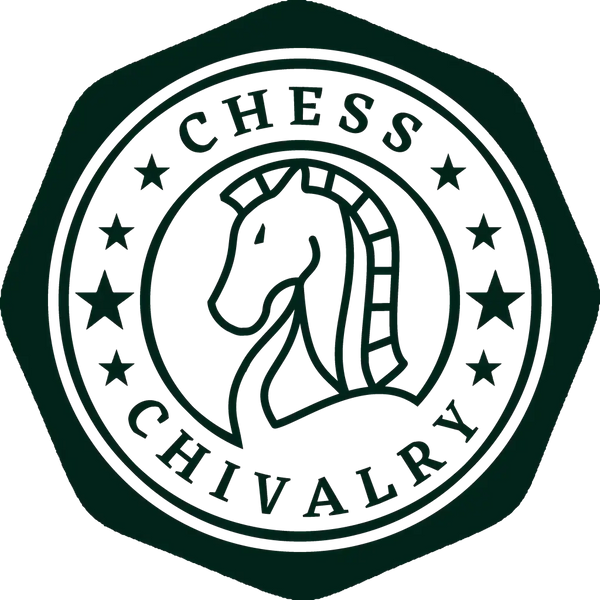
Chess Opening: The Spanish Game (Ruy Lopez)
Share
The Spanish Opening is one of the oldest and most famous chess openings in chess history. It is also often named after the Spanish chess player Ruy López de Segura, a Spanish chess player and writer in the 16th century who coined the game variation. It was he who wrote the book "Libro de la invención liberal y arte del juego del Axedrez", which was published in 1561 and is considered one of the first chess books in Europe. In this book he described many chess openings and strategies, including the Spanish game named after him. Ruy López had a great influence on the development of chess and is still considered one of the most famous chess players and writers in history.

The Spanish Opening begins with the moves 1.e4 e5 2.♘f3 ♘c6 3.♗b5. With these moves, White attacks the black king's pawn and tries to gain control of the centre. Black has several ways to respond, but one of the most common responses is 3...a6 to repel the bishop.
The Spanish Game is an aggressive opening that encourages active play for both players. It is often favoured by players who prefer a fast game with many attacking options. Although there are a few potential traps that an unprepared player can easily fall into, it is a good choice for players of all skill levels who want to improve their game.
Strengths of the Spanish Game
The Spanish chess opening has many strengths, which is why it is popular among beginners. The following is an overview:
- Control of the Centre:
One of the greatest advantages of the Spanish Opening is that it allows White to quickly control the centre of the board. With the moves 1.e4 e5 2.♘f3 ♘c6 3.♗b5 White puts pressure on the black knight and kingside pawn and tries to capture the centre.
- Aggressive Play:
The Ruy Lopez opening is aggressive and allows one to quickly launch an attack. White has many possibilities to press the black king and seize the initiative.
- Good Starting Position for the Pawn Structure:
The Spanish Game often leads to a favourable pawn structure for White, especially in centre control.
- Choices for White:
White has many options in this opening and can adapt his strategy depending on Black's reactions. This allows White to play flexibly and actively shape the game.
- Popularity:
The Spanish Game is one of the oldest and best-known chess openings, used by many players. There are many studies and analyses of game play, which help players to understand it better and improve their skills.
The Spanish Opening thus combines control, initiative, stability and flexibility until the transition to the middlegame. These are also the reasons why the Ruy Lopez Chess Opening is taught and played very frequently.
Weaknesses of the Spanish Game
The chess opening also has some weaknesses that arise directly from its advantages. Here is an overview:
- Vulnerability of the King
Since the Spanish Game is an aggressive opening, it can be more difficult for White to protect his own King. If it is not well placed, this can weaken the white player's positional play.
- Complicated Middlegame Positions:
The Spanish Opening progressions can lead to complicated middlegame positions that are difficult to handle. Without trained tactical skills, this can lead to game-changing mistakes.
- Opponent Counter-Strategy:
Since the Spanish Game is a well-known opening, many opponents will know how to react to it. The player must therefore know how to adapt his strategy in order to be prepared for counter-strategies.
- Opponent Defence:
Since the Ruy Lopez opening is aggressive, the opponent may tend to play defensively. This can make it difficult to put pressure on the black king, even though the opening is offensive.
- Practice and Study Necessary:
Since the Spanish Game is a complex opening, it requires a lot of training to master it well. Both basic theoretical knowledge and frequent playing are therefore recommended.
To compensate for the weaknesses of the opening, players must master the aggressiveness of this game variation, combine it with good defensive play in the middlegame and be able to interpret a broad repertoire of defensive strategies.
Possible Reactions to the Spanish Game
In order to prepare yourself optimally for your opponents, it is advisable to study as many defences as possible. The following is a selection:
Open Variation

Chess Moves:
1. e4 e5 2.♘f3 ♘c6 3.♗b5 a6 4.♗a4 b5 5.♗b3 ♘f6 6.O-O ♘xe4
The open variation is the most common reaction to the move 1.e4 and provides for Black to play the pawn on e5 to create an open position. It is a basic requirement for the rest of the Spanish Variation. After White has placed his bishop on 3.♗b5, it is displaced with the a- and b-pawns, while the knight on g8 captures e4 via f6. Black positions his bishops centrally before entering the middlegame.
Berlin Defence

Chess Moves:
1. e4 e5 2.♘f3 ♘c6 3.♗b5 ♘f6 4.O-O ♘e4
Schliemann Defence

Chess Moves:
1. e4 e5 2.♘f3 ♘c6 3.♗b5 f5
The Schliemann Defence, also called the Schliemann Gambit, involves playing 3...f5 and is an aggressive response to the Spanish Opening. It envisages putting the White King under pressure and launching quick attacks. If White rejects the gambit with 4.d3, there is usually a pawn exchange on e4. However, it can also be rejected with 4.♘c3, which would result in better piece development for White. If the gambit is accepted, however, Black can force the e-file with 4...e4.
Chigorin Variation

Chess Moves:
1.e4 e5 2.♘f3 ♘c6 3.♗b5 a6 4.♗a4 ♘f6 5.O-O ♗e7 6.♖e1 b5 7.♗b3 O-O 8.c3 ♘a5 9.♗c2 d6 10.d4 c5
The Chigorin Variation is a closed game and is characterised by an advance of the pawns on the queenside. For this, after 3.♗b5 the white bishop is expelled with ...a6 and ...b5 and the black c-pawn is advanced after regrouping the knight on a5. Even though the Chigorin Variation allows for strong counterplay by Black, the knight on the edge of the board slightly weakens the Black position.
Steinitz Defence

Chess Moves:
1.e4 e5 2.♘f3 ♘c6 3.♗b5 d6 4.d4 ♗d7...
The Steinitz Defence envisages that after 3.♗b5 Black strengthens his pawn in the centre with ...d6 and resolves the pin of his knight with ...♗d7.
Even though the broad spectrum of defences is very extensive and only a small selection is presented here, the Ruy Lopez Opening is an optimal basis and orientation in the sense of a guide to familiarise oneself step by step with the tactics of chess.
Conclusion on the Spanish Game
The Spanish Opening or Ruy Lopez is a well-known, if not the best-known chess opening in the history of chess. Not least because of its frequent occurrence, every player must deal with it and analyse and rehearse it in detail. But its extensive requirements are by no means a burden. Just playing this chess opening frequently offers a lot of learning potential and leads to a wealth of experience that can also be transferred to other chess openings.
I hope that you were able to gain some insights into the Spanish Game. If you have any further questions, please feel free to contact me via my contact form. And if you are interested in chess pieces or chessboards in tournament format, please have a look at my product range.
I wish you a lot of fun with the game, much success and rapid progress in your learning.
See you soon.
Stefan
